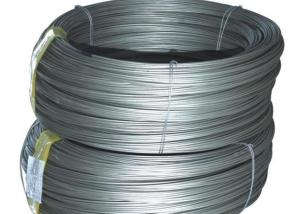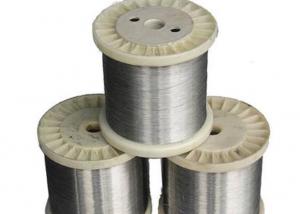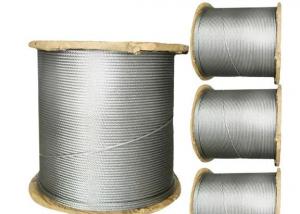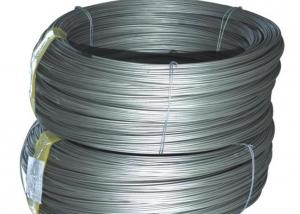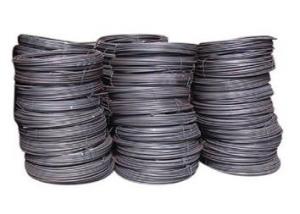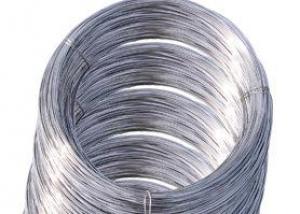Stainless Steel Wire
- Loading Port:
- China Main Port
- Payment Terms:
- TT or LC
- Min Order Qty:
- 1 Ton m.t.
- Supply Capability:
- 2000 Tons Per Month m.t./month
OKorder Service Pledge
OKorder Financial Service
You Might Also Like
Stainless Steel Wire
1.Grade: SS 200,300,400 series
2.Dia: 0.1mm-100mm
3.Length:500m-2000m/Reel
4.Surface: Bright
5.Certificate: Fortune 500, SGS, ISO 9001:2008
6.Test: Salt Spray over200 hours
7.MOQ:500kg
8.Delivery: Within 20 days
9.Packing: Reel, wooden box or according to your requirement
10.Payment terms: China Main Port or CIF ANY PORT
11. Application: Tie wire, pins, lashing, forming wire, filters, gaskets, elevators, safety wire, shaped and flat wire, conveyors, jewelry, springs, brush welding, electrical, wire line, craft and many more applications.
|
Main Grades |
C % |
Si % |
S % |
P % |
Mn % |
Cr % |
Ni % |
Mo % |
Cu % |
|
S30400 |
<0.08 |
<0.75 |
<0.015 |
<0.045 |
<2 |
18.05-19 |
8.01--8.25 |
<0.6 | |
|
304H |
0.04-0.1 |
<0.75 |
<0.015 |
<0.045 |
<2 |
18.05-19 |
8.01--8.25 |
<0.5 | |
|
304Hc1 |
0.03-0.05 |
<0.75 |
<0.015 |
<0.045 |
<2 |
18.05-19 |
8.01-8.25 |
1.2-1.6 | |
|
304Hc |
0.03-0.05 |
<0.75 |
<0.015 |
<0.045 |
<2 |
18.05-19 |
8.01--8.25 |
2-3 | |
|
304Hc3 |
0.03-0.05 |
<0.75 |
<0.015 |
<0.045 |
<2 |
18.05-19 |
8.01--8.25 |
3-3.5 | |
|
304ES |
<0.08 |
<0.75 |
<0.015 |
<0.045 |
2-3 |
16.05-17 |
6.01-6.3 |
1.5-3 | |
|
304M2 |
0.05-0.08 |
<0.75 |
<0.015 |
<0.045 |
2-3 |
18-18.5 |
7-8.1 |
<0.6 | |
|
304M3 |
0.05-0.08 |
<0.75 |
<0.015 |
<0.045 |
2-3 |
18-18.5 |
8.01-8.25 |
<0.6 | |
|
304L |
<0.035 |
<0.75 |
<0.015 |
<0.045 |
<2 |
18.05-19 |
8.01--8.25 |
<0.6 | |
|
321 |
0.04-0.08 |
<0.75 |
<0.015 |
<0.045 |
<2 |
17-18 |
8.01--8.25 |
||
|
316L |
<0.035 |
<0.75 |
<0.015 |
<0.045 |
<2 |
16.05-17 |
10.01--10.35 |
2.01-2.2 |
<1 |
|
316 |
0.04-0.08 |
<0.75 |
<0.015 |
<0.045 |
<2 |
16.05-17 |
10.01--10.35 |
2.01-2.2 |
<1 |
|
316LCu |
<0.035 |
<0.75 |
<0.05 |
<0.045 |
<2 |
16-17 |
10-10.5 |
2-2.25 |
|
|
ER316L |
<0.04 |
0.65 |
<0.03 |
<0.04 |
1.0-2.5 |
18-20 |
11.1-12 |
||
|
201CU |
<0.08 |
<0.75 |
<0.015 |
<0.045 |
8-9.5 |
13.05-14 |
4.01-4.25 |
2-3 | |
|
D667 |
<0.08 |
<0.75 |
<0.015 |
<0.045 |
13-14 |
13-14 |
0.7-1.5 |
1.5-3 | |
|
D665B |
<0.08 |
<0.75 |
<0.015 |
<0.045 |
14-16 |
10.05-11 |
<1.2 |
0.5--1.5 | |
|
202B |
0.1-0.15 |
<0.75 |
<0.015 |
<0.045 |
9-10 |
17.05-18 |
4.5-5 |
||
|
D669 |
0.08-1.0 |
<0.75 |
<0.015 |
<0.045 |
14.5-16 |
11-12 |
<1.2 |
0.5-1.5 | |
|
200CU |
<0.08 |
<0.75 |
<0.015 |
<0.045 |
11-12 |
13-14 |
1-2 |
1.5-2.5 |

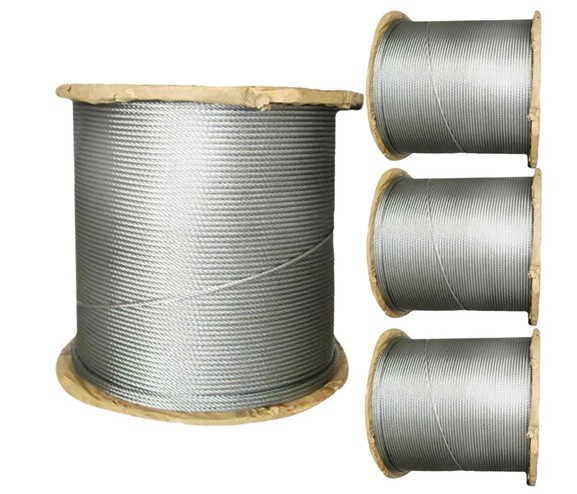
- Q:What are the different types of stainless steel wire springs used in the aerospace industry?
- Various types of stainless steel wire springs are commonly utilized in the aerospace industry to meet the industry's stringent demands. These springs are designed with high strength, corrosion resistance, and reliability in mind. One specific type of stainless steel wire spring frequently employed in the aerospace field is the 17-7PH spring. Crafted from a precipitation-hardening stainless steel alloy, this spring showcases exceptional strength and corrosion resistance. It finds its application in scenarios necessitating high fatigue resistance and the ability to endure extreme temperatures. Another widely used stainless steel wire spring is the 302 spring, which is manufactured from a non-magnetic austenitic stainless steel alloy. It is renowned for its outstanding corrosion resistance and is commonly employed in aerospace applications where protection against chemicals and moisture is critical. Moreover, the aerospace industry extensively incorporates the 316 stainless steel wire spring. This spring is composed of a corrosion-resistant austenitic stainless steel alloy and is highly regarded for its exceptional resistance to pitting and crevice corrosion. It is frequently employed in situations requiring strong performance and resilience in harsh environments. Additionally, the Inconel 718 spring is another type of stainless steel wire spring employed in the aerospace sector. Constructed from a nickel-based superalloy, this spring offers exceptional strength and corrosion resistance at high temperatures. It is often relied upon in aerospace applications that demand exceptional performance in elevated temperature conditions. In summary, the selection of different types of stainless steel wire springs in the aerospace industry depends on specific requirements such as strength, corrosion resistance, and temperature resistance. These springs play a critical role in ensuring the safety, reliability, and performance of aerospace components and systems.
- Q:Where are the stainless steel screws?
- The key is to consider the use and the price. Stainless steel screws are more expensive.
- Q:Can stainless steel wire be used in high temperature applications?
- Yes, stainless steel wire can be used in high temperature applications. Stainless steel is known for its excellent heat resistance properties, making it suitable for use in environments with elevated temperatures. It can withstand high temperatures without losing its strength or durability, making it a reliable choice for various industrial applications that involve heat.
- Q:What are the different types of stainless steel wire fasteners?
- There are several different types of stainless steel wire fasteners available in the market. Some of the most common types include: 1. Stainless steel screws: These are threaded fasteners used to join two or more objects together. They come in various lengths, diameters, and head styles to suit different applications. 2. Stainless steel bolts: Similar to screws, bolts are also threaded fasteners, but they typically have a larger diameter and require a nut to secure the joint. They are commonly used in heavy-duty applications. 3. Stainless steel nuts: Nuts are used in conjunction with bolts to secure the joint. They come in different shapes and sizes, including hexagonal, square, and winged nuts. 4. Stainless steel washers: Washers are flat, thin metal discs used to distribute the load evenly and prevent damage to the surface of the material being fastened. They are available in various sizes and shapes, such as flat washers, lock washers, and fender washers. 5. Stainless steel rivets: Rivets are permanent fasteners that are typically used to join two or more materials together by deforming the end of the rivet after insertion. They are commonly used in industries such as automotive, aerospace, and construction. 6. Stainless steel clips and clamps: Clips and clamps are used to secure or hold objects in place. They are available in various designs, such as spring clips, hose clamps, and pipe clamps. 7. Stainless steel nails: Nails are pointed fasteners used to secure materials together. They are commonly used in woodworking and construction applications. 8. Stainless steel pins: Pins are cylindrical fasteners used to hold components in place or to align two or more parts together. They come in various shapes, such as dowel pins, cotter pins, and hitch pins. 9. Stainless steel hooks: Hooks are curved fasteners used to hang or suspend objects. They are commonly used in applications such as hanging plants, tools, or decorative items. It's important to note that these are just a few examples of the different types of stainless steel wire fasteners available. The choice of fastener will depend on factors such as the application, load requirements, and environmental conditions.
- Q:What are the different types of stainless steel wire rope fittings available?
- There are several types of stainless steel wire rope fittings available, including turnbuckles, thimbles, swage sleeves, swage studs, swage forks, wire rope clips, and eye bolts. These fittings are used to secure, connect, or terminate wire ropes in various applications.
- Q:Can stainless steel wire be used for heat resistance?
- Stainless steel wire is indeed capable of withstanding high temperatures, thanks to its exceptional heat-resistant properties. This quality makes it suitable for a wide range of applications in environments with elevated temperatures. Its remarkable ability to resist heat without warping or compromising its structural integrity is due to its high melting point, typically exceeding 1370 degrees Celsius (2500 degrees Fahrenheit). Moreover, stainless steel wire finds frequent use in heating elements, furnace components, and other similar applications that demand both heat and corrosion resistance. The fact that it maintains its strength and functionality at elevated temperatures makes it a dependable option for heat-resistant purposes.
- Q:What are the different wire coil sizes available for stainless steel wire?
- There are various wire coil sizes available for stainless steel wire, ranging from small coils typically measuring around 1 pound (0.45 kg) to larger coils weighing up to several hundred pounds (100+ kg). The specific sizes can vary depending on the manufacturer and the intended application of the wire.
- Q:What are the different types of stainless steel wire braiding techniques?
- Various industries utilize different stainless steel wire braiding techniques. Some commonly employed methods include: 1. Standard Braiding: Multiple stainless steel wires are interwoven diagonally, forming a flexible and robust braided structure. This technique is prevalent in applications requiring high strength and flexibility, such as hoses, cables, and electrical wiring. 2. Flat Braiding: Stainless steel wires are braided in a flat and parallel arrangement. This type of braiding provides exceptional coverage and protection while maintaining flexibility. It is commonly used in applications desiring a smooth and even surface, such as automotive wiring harnesses. 3. Diamond Braiding: This technique involves interweaving stainless steel wires in a diamond-shaped pattern. It offers enhanced strength and durability, making it suitable for high-pressure applications like hydraulic hoses and industrial machinery. 4. Square Braiding: Stainless steel wires are braided in a square or rectangular pattern. This type of braiding provides extensive coverage and abrasion resistance, making it ideal for heavy-duty applications like mining equipment and oilfield machinery. 5. Knitted Braiding: Stainless steel wires are intertwined in a knitted pattern, similar to fabric. This technique offers flexibility, stretchability, and excellent coverage, making it suitable for expansion joints, bellows, and flexible connectors. 6. Overbraiding: In this technique, a layer of stainless steel wire is braided over an underlying structure or material. It enhances protection, strength, and aesthetic appeal. Overbraiding is commonly used in applications such as hoses, cables, and tubing to improve their structural integrity and resistance to external forces. These examples showcase the variety of stainless steel wire braiding techniques available. The choice of technique depends on specific application requirements, including desired strength, flexibility, coverage, and resistance to environmental factors.
- Q:What's the difference between stainless steel screws and carbon steel screws?,
- These two screws are different. They are not better or worse. Carbon steel screws are usually stronger than stainless steel screws, but they tend to rust.
- Q:What are the different types of stainless steel wire mesh weaves available?
- There exists a variety of stainless steel wire mesh weaves to choose from, each presenting its own distinct pattern and characteristics. Among the commonly utilized weaves are: 1. Plain weave: This weave stands as the most basic and widespread type, where wires interlace in a straightforward crisscross pattern. It yields a sturdy and long-lasting mesh with evenly-sized openings in both directions. 2. Twill weave: By weaving wires in a diagonal manner, this weave produces a noticeable diagonal line effect. Twill weave offers enhanced strength and stability compared to plain weave, making it suitable for heavy-duty applications. 3. Dutch weave: Incorporating a combination of thick and thin wires, Dutch weave results in a tightly-knit mesh with smaller openings. This weave finds common usage in situations requiring fine filtration due to its exceptional particle retention capabilities. 4. Twilled Dutch weave: Combining the characteristics of twill weave and Dutch weave, this weave features a double layer of warp wires, generating a robust mesh with smaller openings in both directions. 5. Reverse Dutch weave: In this weave, the warp wires are thicker than the weft wires. As a result, the mesh possesses larger openings in the weft direction, making it optimal for applications that necessitate high flow rates and mechanical strength. 6. Five-heddle weave: Differing from the conventional two-heddle method, this unique weave employs five heddles. It creates a smooth and flat mesh surface, making it suitable for applications where a uniform appearance is desirable. Each type of stainless steel wire mesh weave possesses its own unique advantages and is selected based on specific application requirements, such as filtration needs, strength, flow rate, and aesthetic preferences.
1. Manufacturer Overview |
|
|---|---|
| Location | Hebei,China |
| Year Established | 2009 |
| Annual Output Value | Above US$1 million |
| Main Markets | Asia, Middle East,America |
| Company Certifications | CE, CCC, ISO90001 |
2. Manufacturer Certificates |
|
|---|---|
| a) Certification Name | |
| Range | |
| Reference | |
| Validity Period | |
3. Manufacturer Capability |
|
|---|---|
| a)Trade Capacity | |
| Nearest Port | Tianjin |
| Export Percentage | 0.3 |
| No.of Employees in Trade Department | 4 People |
| Language Spoken: | English;Chinese |
| b)Factory Information | |
| Factory Size: | Above 5,000 square meters |
| No. of Production Lines | 3 |
| Contract Manufacturing | OEM Service Offered;Design Service Offered |
| Product Price Range | Lower |
Send your message to us
Stainless Steel Wire
- Loading Port:
- China Main Port
- Payment Terms:
- TT or LC
- Min Order Qty:
- 1 Ton m.t.
- Supply Capability:
- 2000 Tons Per Month m.t./month
OKorder Service Pledge
OKorder Financial Service
Similar products
New products
Hot products
Hot Searches
Related keywords
